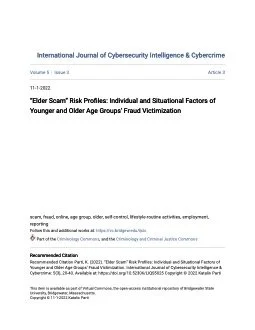By Pamela B. Teaster, Erica Wood, Sally B. Hurme, Carlisle Shealy
In the United States, 10.6% of adults ages 18-64 and 35.2% of people age 65 and older live with a disability (Kraus et al., 2018). Four and a half percent of adults ages 18-64 and 8.9% of people age 65 and older have a cognitive disability (Kraus et al., 2018). Certain cognitive disabilities make adults vulnerable to abuse and require the help of a surrogate decision-maker, such as a guardian or an agent under a power of attorney (Gunther, 2011). A wide spectrum of adults may need the assistance of a guardian, including individuals with serious mental illness, intellectual disability, and traumatic brain injury. The number of adults with serious mental illness increased from 8.3 million in 2008 to 13.1 million in 2019; the greatest increase occurred in young adults ages 18-25 (Lipari, 2020). More than 7 million people in the United States have an intellectual disability, with many requiring assistance (Population Specific Fact Sheet–Intellectual Disability | National Disability Navigator Resource Collaborative, n.d.). The Centers for Disease Control and Prevention estimates that each year there are more than 2.87 million visits to emergency departments, hospitalizations, and deaths due to traumatic brain injury; some of these result in long-term disability (TBI Data | Concussion | Traumatic Brain Injury | CDC Injury Center, 2021). The U.S. Department of Veterans Affairs reports that more than 400,000 U.S. service members experienced a traumatic brain injury between 2000 and 2019 (VA Research on Traumatic Brain Injury (TBI), n.d.). Individuals with serious mental illness, intellectual disability, and traumatic brain injury may require short- or long-term guardianship depending on the progression and treatment of their disability. Advancements in medical care not only expand the lifespan of older individuals but also enhance the life expectancies of younger individuals with brain injuries, serious mental illness, or intellectual disabilities, who may outlive their family caregivers (Patja et al., 2000). Terminology for guardianship differs by state. In many but not all states, court-appointed surrogates who make decisions concerning an individual’s finances are referred to as “conservators,” and those who make decisions concerning an individual’s health or personal matters are called “guardians.” For this report, we use the term guardian to refer to both, unless specifically indicated. Guardians are bound by statutory requirements and case law — as well as ethical principles — to act in the best interests of a vulnerable adult. Guardians are fiduciaries, which means that they must act according to the highest standards of care, accountability, trust, honesty, confidentiality, and avoidance of conflict of interest (Managing Someone Else’s Money: Help for Court Appointed Guardian of Property and Conservators, 2019). Powers given to guardians are often immense — for example, the authority to sell a person’s home and personal property, make contracts on their behalf, and consent to all medical treatments. In addition, guardians may be authorized to charge fees for their services that are payable from an adult’s estate — a situation that, left unmonitored, opens the potential for abuse. Moreover, adults with cognitive impairments may be unable to recognize when guardians are not serving as they should. Although guardians should provide protection, there is also the risk that a guardian may take advantage of an adult whom they were named to protect. Despite this situation, we currently lack reliable data both on how many guardianships or guardians exist and on the outcomes of these arrangements. A number of high-profile media exposés (e.g., Aviv, 2017; Day, Stark, & Coscarelli, 2021; Garland, 2017) have highlighted how, in some egregious cases, guardian actions have harmed adults who are at risk.
Washington DC: National Institute of Justice , 2022. 64p.





















